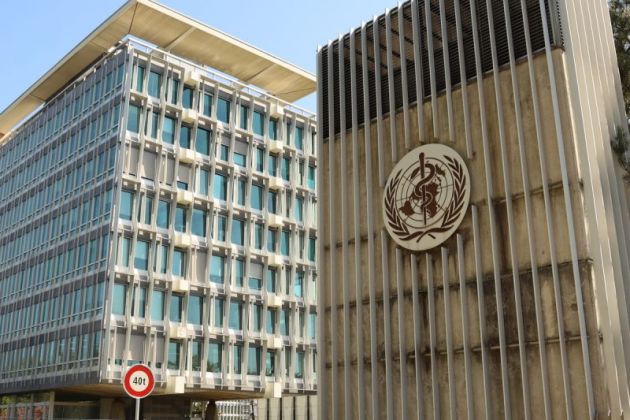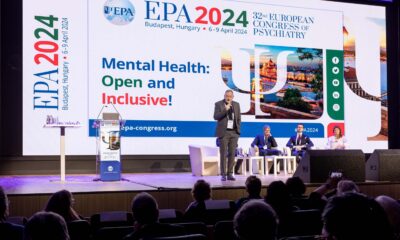Health & Society
Life and Drugs (part 2), The Cannabis
Cannabis is the most consumed substance in Europe by 15.1% of the population aged 15-34 with 2.1 % being daily cannabis users (EMCDDA European Drug Report June 2023). And 97 000 users entered for drug treatments related to cannabis use in 2021 and were involved in 25% of the acute toxicity presentations, usually mixed with other substances. Cannabis is with alcohol the gateway to drugs for young people leading to the universe of drugs.
If there was a government that had an interest in corrupting its governed, it would only have to encourage the use of hashish.
Artificial Paradises – Charles Baudelaire (1860)
Cannabis is a dioecious plant (plant female and plant male). Cannabis has 3 subspecies: Cannabis sativa sativa L., is 1.80 m to 3 m high, with long fibers for industrial use (named as “hemp”), with a flowering time of 60-90 days; the smaller C. s. indica (1m), flowers more quickly 50-60 days and the C. s. ruderalis, a wilder type. France is the top hemp producer in Europe and third in the world.
From a drug use point of view, only the flowers of sativa and indica are interesting because richer in cannabinoids located in numerous small vesicles, the trichomes, more located around the flower for a protection against the predators in the context of food chain vs. species survival!
Initially the C. sativa was considered for its euphoric effects, producing the “high” while the C. indica produces a relaxation of the cerebral activity, creating an effect “stone”, which sticks. According to the UNODC, Morocco, in the Rif, is the world’s largest producer of psychoactive cannabis plants for the production of hashish (resin form) but since 2021 the culture is regulated.
The Cannabinoid substances were discovered in the 1960s in Israel by the team of Raphael Mechoulam. More than 113 substances have been isolated in the plant but the majority of the effects and their functions are still under study. They are all soluble in lipids, alcohols and organic solvents but almost insoluble in water.
There are 3 types of cannabinoids: – phytocannabinoids of the fresh plant; they are transformed under the action of heat, light, and during drying; – synthetic cannabinoids developed in the laboratory; – endocannabinoids: 8 are currently listed. They are produced by certain organisms, derived from fatty acids in cell membranes, they constitute the endocannabinoid system.
A) Among the phytocannabinoids (molecules with 21 carbon atoms): -CBG (Cannabigerol) is derived from cannabigerolic acid (CBGA), a combination in the plant of olivetolic acid and geranyldiphosphate. CBGA, which is acidic, is easily broken down into CBG with the loss of CO2. The CBG (less than 1% of the plant) is considered as the “cannabinoid strain” with a low boiling point (52°C) and therefore easily transformable! Should be non-psychotropic. -THC (TetraHydroCannabinol). Delta 9-THC is the psychotropic drug responsible for the euphoric high and its weaker psychotropic isomer, the Delta 8-THC. THC is derived from the non-psychoactive acid : THCA. -HHC (HexaHydroCannabinol-a hydrogenated THC) has also been isolated in small quantities in seeds and pollen, synthesized in 1947 by Adams Roger. Its psychotropic action is comparable to THC, it alters the perception of time. In 2023 HHC is already illegal in several EU countries (See also infra).
Let’s remember that unlike alkaloid psychotropic molecules as cocaine and morphine, the Delta 8-THC and Delta 9-THC are tricyclic terpenoid drugs. The cannabinoids are a class of lipophilic molecules, storing in fatty bodies including the brain (60% of lipids) and easily crossing phospholipid cell membranes. Thus, THC is detectable up to 14 days in the blood, 30 days in the urine and 3 months in the hair. -The famous CBD (Cannabidiol) which was discovered in 1940 is present in the plant. It also derives from the cannabigerolic acid (CBGA) but with a synthesis route different from the THC. The CBD oil can be extracted from the flowers either by cold pressing or by using cold carbon dioxide (CO2) or by chemical solvents (ethanol, butane,…) or by natural solvents (olive oil, coconut oil,…). CBD oil is the subject of important advertising and marketing campaigns praising its health benefits.
CBD was not considered addictive if it is pure, but in 2016 Merrick J. et al. had shown that in an acidic environment, CBD slowly transforms into Delta-9 and Delta-8 THC. And what is the gastric environment if not an acidic environment! Moreover, it has been shown by Czégény et al, 2021, that 25% to 52% of CBD used in e-cigarettes (temperature around 300 ° C) is transformed into THC. Similarly the works of Love C.A. et al, 2023, highlight the potential respiratory health risks for the users of CBD vaping products. There is also the idea of combining CBD and THC in therapeutic cases, with CBD attenuating the deleterious psychotropic effects of THC. Todd et al (2017) show that if a co-administration could be beneficial in the very short term, on the contrary it would have a potentiating effect of the THC in the long term.
CBD is the object of a powerful marketing network to the public. However, in June 2022 the EFSA (European Food Safety Authority Panel) considering the significant uncertainties and data gaps, concludes that the safety of CBD as a Novel Food cannot currently be established: there are insufficient data on the effects of CBD on the liver, gastrointestinal tract, endocrine system, nervous system and on people’s psychological well-being. NOTE: The semi-synthetic cannabinoids HHC (Hexahydrocannabinol) is already found in 20 European countries as ‘replacement for cannabis’ and also 3 new ones: the HHC-acetate, the HHcannabiphorol and the Tetrahydrocannabidiol all produced using the CBD extracted from low-THC cannabis (EMCDDA Report 2023). Their availability is raising concerns about the youth and public health and HHC is already illegal in several EU countries.
B) The synthetic cannabinoids are the most consumed such as Spices at the origin of suicides, the Buddha Blues, not expensive, equivalent to 95% of psychoactive substance, very popular with teenagers, circulates in colleges and high schools. Other names : Black Mamba, AK-47, Shooting Star, Yucatan, Moon Rocks,… Vaporized or ingested, the synthetic cannabinoids cause convulsions, cardiovascular and neurological disorders and psychosis. The peak of action is between 2 and 5 hours until 20 hours.
Manufactured from the 1960’s initially to search for receptors in the brain, they are lipophilic molecules of 22 to 26 carbons, having a higher binding affinity up to 100%, selective or not, for the same receptors as THC and the ones of the endogenous ligands. Thus we have 18 families listed in 2019 among which the CP (cyclohexylphenols), HU (the HU-210 a structural analog of THC is 100 times more powerful), JWH, AM, AB-FUBINACA, XLR, etc.
Studies of the Scientific Reports (2017, 7:10516), suggest that these synthetic cannabinoids exert serious side effects as well as proconvulsive properties (Schneir A.B. et al, 2012) where other authors show anticonvulsive effects in cases of severe epilepsy (Devinsky O. et al, 2016).
NOTE: The THC content of festive (and illegal) cannabis is typically 15% up to 30% compared to 0.2-0.3% of the original plant before genetic manipulation. Synthetic THC is 100 times more potent and produces zombies.
C) The EndoCannabinoid System (ECS) is one of the most important and complex communication systems of the body that contributes to homeostasis. It is phylogenetically very old, present from invertebrates to vertebrates except in protozoa and insects (Silver R.J., 2019). The ECS is composed of:
1) Membrane receptors consisting of 7 transmembrane helices with 3 extra and 3 intracellular loops. The NH2-terminal is extracellular and the COOH-terminal intracytoplasmic. Receptors couple with G proteins (a guanosine triphosphate binding) located on the internal side and which transmit the signal. They are : a)-The CB1 Receptor, discovered in 1988 (William et al.) and then identified by Matsuda L. et al. (1990). It is mainly located in the neurons of the Central Nervous System and weakly in the brainstem. In the periphery, it is present in the lungs, the gastrointestinal system, the testicles and ovaries. Its localization is mainly pre-synaptic. It is involved in psychotropic effects. The exogenous agonist is THC. Sagan S. et al. (2008), show that glial cells (astrocytes) have also G protein-coupled receptors, activated by cannabinoids, but distinct from the CB1 receptor. b)-The CB2 receptor (1993 by Munro S. et al.) is more peripheral. Mostly related to the cells of the immune system, including the spleen and amygdala. More involved in immunomodulatory effects.
2) Endogenous ligands. In the same way that the endogenous opioid system uses endorphins, the endocannabinoid system has its own signalling molecules: the endocannabinoids (8 are listed). These are neuromediators and neuromodulators synthesized in nerve cells and astrocytes “on demand” immediately with the entry of calcium into the neuron and they are not stored in vesicles. They are synthesized in the neuronal membrane from phospholipids. They have an inhibitory effect on the emission of dopamine, serotonin, glutamate and others. They have a retrograde synaptic signaling (from the postsynaptic neuron to the pre-synaptic). The most studied are: a)- the AEA for N-ArachidonoylEthanolAmide called Anandamide (from the Sanskrit ananda=felicity) isolated in 1992 by Mechoulam’s team; AEA is highly expressed in the hippocampus, cerebral cortex and cerebellum and also in the hypothalamus and brainstem. AEA has a high affinity for the CB1 receptor and a low affinity for CB2. AEA also acts on other systems such as vanilloid, peroxisome and glutamate receptors and activates transcription factors through the MAP-kinase pathway. AEA was also found in the cacao (di Tomaso E. et al, 1996). b)- the 2-AG for 2-Arachidonoylglycerol, a monoglyceride ester or ether, isolated in 1995. Has a high affinity for CB2 receptors, also for CB1. The binding of a ligand (AEA or 2-AG) on its receptor (CB1 or CB2) and the activation of the G-protein (GTP/GDP) are the first two steps required for the transmission of a signal inside the cell via a cascade of reactions. Also involved are adenylate cyclase, modulation of ion channels including calcium (Ca 2+) and potassium (K+), and the intervention of the phospholipase C.
3) Synthesis enzymes such as N-acyltransferase, phospholipases A2 and C.
4) Degradation enzymes. According Cravatt B.F. et al. 2001; Ueda N. et al. 2000, the 2 main ones are : a)-Fatty acid amide hydrolase (FAAH) with a single transmembrane domaine, it degrades the bioactive fatty acid amides class including AEA (anandamide) and the 2-AG. FAAH is localized in the post-synaptic neurons. b)-Monoacylglycerol lipase (MAGL) inactivates 2-AG (2-Arachidonoylglycerol) at 85% and also AEA .
Thus, studies have been shown that the EndoCannabinoid System is involved in: memory, mood, appetite, sleep, pain response, nausea, emotions, thermoregulation, immunity, male and female fertility, reproductive activities, the reward system and the use of psychoactive substances.
Psychoactive substances act on this ECS circuit by modifying the chemical balance of the Nervous System, which, not being naturally and correctly regulated, will influence the control of movements and emotions, creating this euphoria and illusion of well-being and generating dependence more or less slowly, according to Thorndike’s Law of Effect (1911): “A response is more likely to be reproduced if it leads to satisfaction for the organism and abandoned if it results in dissatisfaction”.
The psychoactive substances interfere with specific areas of the brain, which is composed of 3 basic parts that according to the theory will define our personality and character traits according to their respective influence:
-a reptilian or archaic brain dating back circa 400 million years. It is quite reliable, fast, manages basic perceptions and functions including: food, sexuality, homeostasis, survival reactions (attack or flight), but is compulsive. -then comes the limbic brain of mammals, 100 million years ago with 2 parts: Paleolimbic of lower mammals and the Neolimbic which distinguishes the good from the bad. It develops the learning, memory and emotions, it is the heart of the reward and punishment system in humans. -and finally the cerebral cortex or neo-cortex of primates and then human beings. It is the place of analysis, decision-making, intelligence, creativity, has a notion of future, and made the language possible. The brain is composed of some 90 billion cells, composed of highly plasticated neurons and glial cells. Its development ends around the age of 25 with a significant transition during adolescence, the change from the dependence of childhood to the autonomy of adult.
At the brain level, the Ventral Tegmental Area (VTA) of the mesolimbic midbrain is one of the primitive regions of the brain. Its neurons synthesize the neurotransmitter dopamine which their axons direct to the nucleus accumbens. The VTA is also influenced by endorphins and is the target of opiate drugs (morphine and heroin). -The nucleus accumbens plays a central role in the reward circuit (Klawonn A.M. and Malenka R.C., 2018). Its activity is modulated by dopamine which promotes craving and reward while serotonin has an inhibitory role. This nucleus is also connected to other centers involved in the reward system, including the hypothalamus. -The prefrontal cortex, a more recent region, is a significant relay of the reward circuit. Its activity is also modulated by dopamine. -Two other centers of the limbic system participate in the reward circuit: the hippocampus, which is the pillar of memory and the amygdala, which records perceptions.
-The neurotransmitter dopamine (pleasure molecule) plays a central role in positive reinforcement and contributes to addiction. -The GABA (gamma-aminobutyric acid), an inhibitor that is very present in the neurons of the cortex, participates in motor control and regulates anxiety. -The amino acid Glutamate is the most abundant excitatory neurotransmitter in the brain. It is associated with learning and memory. It regulates the release of dopamine in the nucleus accumbens. (Glutamate is also a food additive: E621). Its membrane receptor is the NMDA (N-methyl-D-aspartic).
The origin of the “high” or euphoria is due to the properties of THC which binds more stably than AEA to CB1 receptors (60% vs. 20%) resulting in an excessive increase in dopamine release and a prolonged excitation of meso-limbic dopaminergic neurons, meso-accumbic (the nucleus accumbens) and meso-cortical neurons of the brain, in the reward system and providing pleasure, which will lead to the drug search and then dependence.
The Adolescence:
Adolescent behavior is often characterized by impulsivity, sensation-seeking and risk-taking behavior. This is related to the sequential brain maturation with the accelerated maturation of limbic structures (sensitivity to emotional and social signals) and then of the prefrontal cortex (rational and plans ahead) which evolution towards maturity is slower and therefore delayed (Giedd, J.N. et al. 1999; Casey, B.J. et al. 2008). Therefore, teenagers can have deep and complex emotions but they cannot fully control them. Hence the risk-taking and impulsiveness without yet assuming the consequences. This makes adolescence a perilous time of life, but also full of possibilities and with a great adaptability thanks to brain plasticity and synaptic pruning.
The Pathologies :
Cannabis has been associated epidemiologically with significant fetal malformations and cancer induction in children and adult populations.
1) Testicular cancer is most common in youth between the ages of 15-35 using cannabis according to the Cancer Research Foundation. There is an increased risk of testicular germ cell tumor (Gurney J. et al. 2015) by deregulation of the hypothalamic-pituitary axis. Indeed, CB1 and CB2 receptors are present in:
-the hypothalamus where THC blocks the hormone that controls sexual maturation at puberty and fertility, the ovulation hormone lutein and the testosterone;
-on testicular tissue, THC reduces testosterone production in Leydig cells and has a pro-apoptotic effect on Sertoli cells;
-on spermatozoa, THC alters concentration, count and motility with problems of infertility and impaired spermatogenesis (Gundersen T. D. et al. 2015). THC would be able to damage the DNA until the chromotripsis (bursting) of the chromosome with possibility of genetic transmission ( Reece A.S. and Hulse G.K. 2016).
2) Dong et al. 2019, already highlighted the neural and immune impact of cannabinoids on fetal and offspring development.
3)Hjorthoj C. et al 2023, clearly demonstrated an association between cannabis use disorder and schizophrenia affecting the way a person thinks, feels and behaves.
4)With a 20-year hindsight, the therapeutic legalization of cannabis in Colorado in 2000 has shown (Reece and Hulse, 2019) in women under 24 years of age consuming THC during their pregnancy, a 5-fold increase in teratogenic incidence in newborns such as spina bifida, microcephaly, trisomy 21, absence of partitions between the heart atria or ventricles, etc. These abnormalities may be correlated with the action of cannabinoids known to modify histones (including H3) as well as the methylation of Cytosine-Phosphate-Guanine sites of DNA, thus altering the regulatory systems of gene expression.
Costentin J. (CNPERT, 2020) reminds that THC consumption leads to epigenetic modifications that affect the immune system, cognitive activities, brain maturation, with the development of psychiatric disorders. In abortion products from cannabis-using mothers, the nucleus accumbens (in the limbic system) of these fetuses shows a decrease in mRNA (RNA messenger) coding for the dopaminergic D2 receptors and a rarefaction of these receptors. This under-expression altering the reward circuit would facilitate later the interest for drugs by the youth.
So, as far as the cannabis-youth relationship is concerned, -we need to tackle this widely popular substance very seriously and gather evidences against the harmful influence of biased and commercial arguments, -we need to make these data widely known to protect the young public and for the sake of future generations.
There are a large number of possible influences on adolescents such as protective and/or risk factors. They are : family, school and teachers, peers, neighborhood, leisure, media, culture and legislation. But the main one remains parents and parenting practices. Indeed, they can help (or not) to protect children by listening to and leading them by example.
Based on the contacts established across Europe by our volunteers with young people, parents, associations, teachers, social workers, health professionals, local and national leaders, security and police officers, The Truth About Drugs campaign was actively developed. This is a prevention campaign with education on health risks, aimed at youth and public awareness on the potential harms of marijuana and other illicit drugs, so that the risks are clearly understood.
« It is ignorance that blinds and misleads us. Open your eyes Ô miserable mortals » said Leonardo Da Vinci (1452-1519). Thus, empowered with the real facts on drugs, young people will be able to face with lucidity the different aspects of life problems related to drug use, to make the right decision and be able to fully realize their own potential.
This approach perfectly fit with the 2023 theme of the UN International Day: “People first: stop stigma and discrimination, strengthen prevention” .
“If things were a little better known and understood, we would all lead happier lives” L.Ron Hubbard (1965)
References:
Consult also the regulation in the EU: -Recreational use of cannabis – Laws and policies in selected EU Member States https://www.europarl.europa.eu/RegData/etudes/BRIE/2023/749792/EPRS_BRI(2023)749792_EN.pdf
-International Day against Drug Abuse and Illicit Trafficking – EU action against illicit drugs https://www.europarl.europa.eu/RegData/etudes/ATAG/2022/733548/EPRS_ATA(2022)733548_EN.pdf
About the drugs visit: www.fdfe.eu ; www.drugfreeworld.org
Health & Society
Lia Kali on psychiatry: “a child tied to a bed, even for ten minutes… is torture”

It struck a chord with many when it was released a year ago. The song sheds light on the flaws and mistreatment prevalent in psychiatric facilities, drawing attention from both the audience and critics. Recently, Lia Kali shared her journey behind the song on the popular Spanish TV show “El Hormiguero” on Antena 3TV where she opened up about the personal struggles that inspired her music.
“UCA” serves as more than a musical piece, it stands as a powerful testament to the challenges faced by a young girl caught in a system that fails to provide genuine support and compassion, instead perpetuating oppression and cruelty. The song delves into a narrative of turmoil within a family dynamic that quickly spirals into violence, leading Lia Kali to seek refuge and eventually find herself confined in an adolescent psychiatric facility out of desperation.
Life in a psychiatric center was like torture, says Lia Kali
During her appearance on “El Hormiguero” Lia Kali shared how her freedom and autonomy were stripped away in the name of treatment. She painted a picture of conditions at UCA, where youths are often heavily medicated and kept isolated, resembling prisoners more, than patients. The song talks about how she was made to take medication without a diagnosis, highlighting the lack of empathy and care that worsened her suffering and that of other young people in similar circumstances.
The showman Pablo Motos asked Lia Kali “what was life like? I’ve never asked him…. I’ve never been with anyone who’s already been…. What was life like in there?”
And Lia answered categorically: “Torture. I mean…all of a sudden… that’s when you realize it and that’s also why, when I… when I asked myself whether I wanted to release this song or not, I realized that I did because I talked to people who still dealt with those centers and who still knew that the same practices were still being done, which ultimately are torture, which is tying people to the bed the same way for a week.
Kali described the inhumane and degrading practices that still persist in some adolescent crisis units, where young people are tied to beds and over-medicated, deprived of any human contact and basic understanding-treatments that she said are tantamount to torture.
“Are you going to tell me that you are trying to heal and help someone who is sick and what she needs is a fucking hug, and you won’t let her have any physical contact or talk to anyone and that your solution is to medicate her until she doesn’t even know who she is and have her tied to the bed without really caring about her diagnosis? I think that in Spain there is a big problem that what we do with people who bother is to put them to sleep. They dont care.” Lia Kali said.
She continued saying: “So I am ashamed and I am very sad that even today there are people who have relatives who have to go through similar tortures, tortures that are even forbidden in Europe, for example mechanical restraint, which is tying you to a bed, a lot of places in Europe, in which it is forbidden because it is understood as torture, which is what it is. I mean, to have a child, even a child tied to a bed, whether it is for an hour, ten minutes, it doesn’t matter, it is torture. It is a child… For God’s sake!””
Lia Kali’s impactful story in “UCA” has sparked conversations about the morality of psychiatric treatment for juveniles and the urgent need for changes within these facilities. The singer not only critiques the physical and emotional harm she endured but also condemns the apathy and systemic mistreatment by individuals who are meant to provide protection and healing.
Lia Kali’s appearance on “El Hormiguero” not just helped share her personal journey but also amplified the message of the song, resonating with audiences who may have been unaware of the reality faced by many adolescent crisis units, or those who suffered it and thought it “was normal”, or just did not find the strength to speak up. Her courage in sharing her story has been praised as a step towards demanding change, motivating others to speak up and take action against injustices and tortures in the mental health sector.
Psychiatry, treating patients “like dogs”
“What I found was a bunch of psychopaths who were there, probably underpaid, but treating us as if we were literally dogs. And in the UCA of Sant Boi I will say it and well, well, even enjoying it, for me the hardest thing was to say that I was there for a week, because after that week they realized that I did not have to be there. I got there because of something that made no sense at all and it was a doctor who did not feel like stopping to look at what was happening to me at home and why I was the way I was at that moment and sent me to a place where I did not belong.”
Evidencing a practice that is denounced a common in psychiatric hospital, Lia stated that she “was medicated without a diagnosis, right? I mean, it was like super crazy and I was aware of everything and I was like ‘how can there be such psychopaths here enjoying watching and laughing even when they do a restraint on someone and throw them on the [floor]?’. You know those…” speaking of when the hospital personnel were putting their knees on the chest of the patient, “Yeah, this happened to me. And I remember the face. I have that kid’s face etched in my mind, that half smile, of enjoying that and saying Loco, man, we have real psychopaths. How come there’s not a much bigger control in Spain? Fuck, they are our people, you know? They are also people. They’re people who feel, they’re people who love and they’re people who sometimes life has gotten the better of them. Sometimes they are just born this way, different. And I don’t think anybody deserves this. Hopefully, it will never happen to anyone in your family, no and hopefully and hopefully, it will change. And what I am saying here now, I hope that tomorrow there will be more control over these shitty centers where people are literally mistreated.”
“UCA” by Lia Kali transcends being a song, it serves as a call to provoke change emphasizing that art has a role, in addressing society’s darkest truths to inspire empathy. In a world where young voices are often disregarded or hushed, Lia Kali has found a potent means to ensure that her voice alongside others is acknowledged.
More about Lia Kali
According to the site of her agents:
“Lia Kali first discovered music within home and when she was just sixteen she rode her bike over all the jams in Barcelona. There’s where she made friend with lots of musicians and artists of the city and where she started to dialogue with reggae, jazz, soul and rap. Since then she has never stopped singing. Lia jumped from jams to other live stages of Barcelona with a bunch of projects, such as the Amy Winehouse tribute she leaded. That’s how she realised her love with the stage was much more than a first-glimpse love: the stage is her place to be. Eventually she got tired of singing others’ songs and started writing her own pieces and discovered the healing within it. Lia Kali writes the original soundtrack from her day by day stumbles and falls and released her first singles on 2022, going viral and reaching milions of streams and views in musical platforms and TikTok. On March 2023 she launches her very first album ‘Contra Todo Pronóstico’, where she summs featurings with the real who-is-who in the urban and rap Spanish scene such as Toni Anzis, Acción Sanchez, J Abecia, Zatu Rey from SFDK and even the top respected Colombian rapper Nanpa Básico. Lia Kali is nowadays most requested voices of the scene and with her debut album she makes one thing clear above all: any label falls short for her!”
Health & Society
Users of Antidepressants may suffer due to Doctors not knowing new Research and Guidelines

Research show people using antidepressants have problems withdrawing from the drugs due to doctors not knowing how to do it correctly, and that it can take months and years due to severe withdrawal effects. Adverse withdrawal effects often are not recognized or misdiagnosed as relapse.
Millions affected
When the SSRI antidepressants first appeared on the market they were presented as drugs that could solve life situations and with no problems related to them. In fact, manufacturers distributed numerous papers with description of withdrawal symptoms from the drugs as being “brief and mild”, based on studies conducted by the drug companies themselves which focused on people who had been on the antidepressants for only 8 to 12 weeks. The result has been that over the years both doctors and the general population have come to believe these drugs can not cause severe and long-lasting withdrawal symptoms on stopping them. And further that stopping the use of these drugs following a treatment would not be a problem.
What has not been the focus in research is that the longer people are on these antidepressants, the harder it is to stop and the more severe the withdrawal effects.
Research presented at this year’s European Psychiatric Congress show there are major problems related to this and research indicate that more than half will have problems stopping, amounting to millions in Europe being affected.
Antidepressants cause residual change to cell structure
The use of antidepressants causes changes to the body and its ability to regulate the use of its own neurotransmitters used to control numerous bodily functions. The result of this change of the cell structures is that once a user has stopped the antidepressants this can cause withdrawal effects and these can last months or years after the drug has left the system. The new research explain what many users have said they have felt for years.
Dr Mark Horowitz, an expert and Clinical Research Fellow in Psychiatry at the National Health Service (NHS) in England, presented extensive research findings that put a new light to the problem.
“When you stop the drug, let’s say months or years after the patient had been started on drug treatment following a stressful period in their life, the antidepressant is metabolized by the liver and kidneys in a few days or weeks. But what doesn’t change in a few days or weeks is the residual changes to the post-synaptic serotonin receptors and other systems downstream of this,” Dr. Horowitz told.
In studies on humans, there are changes to the serotonergic system that persists for up to four years after the antidepressants are stopped.
“In other words, you now have a system that is less sensitive to serotonin being exposed to normal levels of serotonin after the drug is removed. And overall, this could be seen as a low serotonin syndrome,” he clarified.
This of course is a very simplified version of what’s going on. There are many other neurotransmitters and downstream effects of these changes that may also persist for long periods after the drug is stopped. All of these changes also are likely to explain the wide-ranging and long-lasting symptoms that occur after stopping antidepressants.
Adaptation to the drug

The underlying problem that has often been neglected is that years of use has caused an adaptation to the antidepressant drug by the body and brain and this condition persists for longer than it takes the drug to be eliminated from the body, and that’s what causes withdrawal effects.
Dr Mark Horowitz explains why withdrawal effects last for more than a few days or weeks after the drug is out of the system, “it’s not the time taken for the drug to leave the system that determines the length of the effect. It’s the time taken for the system to readapt to the drug not being there that explains how long withdrawal symptoms can last for.”
Antidepressant withdrawal syndrome is a set of physiological symptoms that occur on stopping or reducing the dose of an antidepressant. They can manifest in either psychological or physical symptoms because these drugs affect so many bodily systems. They occur because adaptations to the brain caused by the drug take time to resolve.
Dr Mark Horowitz pointed out that it’s important to understand that withdrawal symptoms do not require addiction, all that is required is adaptation to the drug. This is often referred to as physical dependence. Physical dependence in pharmacological terms means the process of adaptation to appear to exposure to a drug that affects the brain, which is true for antidepressants (and, for example, to caffeine, which does not generally cause addiction but can cause physical dependence and therefore withdrawal effects).
As the SSRI antidepressants act on a neurotransmitter mechanism that influence not only mood but many bodily systems withdrawing from the drug after years of adaptation thus can cause strong reactions on many of these functions and their influence on one’s life.
Symptoms of withdrawal
There are dozens and dozens of possible effects that can be caused. Symptoms include dizziness, insomnia, impaired concentration, fatigue, headache, tremor, tachycardia, and nightmares. Withdrawal can even cause affective symptoms such as depressed mood, irritability, anxiety, and panic attacks.
“We know that these are symptoms of withdrawal and not just relapse (a return of someone’s underlying condition), because they have been found in studies of people who stopped antidepressants with no underlying mental health conditions,” Dr Mark Horowitz told. He mentioned examples such as people who are given these drugs for pain, for the menopause, and even in healthy volunteers.
There are other effects including an increase in suicide attempts in the two weeks after stopping antidepressants. It has been attributed to withdrawal effects itself because it’s too quick for relapse to explain this increase in symptoms. Dr Mark Horowitz further noted that they have also found in studies that while 30% of those who responded were suicidal before starting medication, 60% became suicidal after stopping so that this means for 30% of people they will experience being suicidal for the first time in their lives because of withdrawal effects.
The maybe most disturbing symptom from withdrawal of antidepressants, which often has been neglected, is a condition known as akathisia. Akathisia is a movement disorder usually caused by a psychoactive substance in which the individual generally will experience an intense sensation of unease or an inner restlessness that often prompts the patient to pace backwards and forwards and can be an intensely unpleasant experience. Dr Mark Horowitz noted that it is often recognised as a long-term consequence of antipsychotic exposure, but withdrawal from antidepressants and benzodiazepines and a variety of other psychiatric drugs can also cause the condition.
“It is the most horrible presentations that I see. People are pacing, they feel agitated, they feel terror. A lot of them are talking about suicide because it is a state in which you get no rest and no calm, often for weeks and sometimes longer,” Dr Mark Horowitz pointed out.
And it’s important as this condition is often misdiagnosed when people are presented to the emergency department as agitated depression, as mania, because many clinicians and others are unfamiliar with the fact that coming off these drugs can cause akathisia.
Withdrawal effects not recognized or misdiagnosed as relapse
Tens of thousands users of antidepressants from Europe every month are seeking information and advice from American peer support forums on how to come off their medications. Their stories are for many very similar.
The research group of Dr Mark Horowitz surveyed 1,300 of these. Three quarters of them said their doctor’s advice on withdrawing was unhelpful.
The major reasons where that the doctor had recommended a rate of reduction that was much too quick. And that the treating doctors weren’t familiar enough with withdrawal symptoms to have any advice, or they told the user that stopping with antidepressants would not cause withdrawal symptoms.
Dr Mark Horowitz indicated that doctors often still believe that withdrawal effects from antidepressants are “brief and mild”. And they do not know that withdrawal symptoms include anxiety, depressed mood, and insomnia.
“It’s easy to confuse with a relapse of depression or anxiety, especially when it’s in the clinician’s minds that withdrawal effects are brief and mild. Someone turns up with severe symptoms that are long lasting, it’s very hard to put the connection together,” Dr Mark Horowitz added.
Another disturbing fact is that withdrawal effects is not only related to antidepressants. “The same is true for coming off of all psychiatric drugs. Often the changes produced on the brain by psychiatric drugs can persist for months or years after stopping, which is why withdrawal syndromes can last a lot longer if it takes the drug to be eliminated from the body,” Dr Mark Horowitz pointed out.
Health & Society
The World Health Organization allows experimental drugs to be used

From time to time one has breakfast with some international news published by journalistic media of all kinds, of those that catch one’s attention. In some cases I usually read them and put them aside, and in others they simply become part of my archive of forgotten papers, a sort of newspaper pages forgotten in boxes, which from time to time pass to a better life. They collect dust, take up space and with the passing of the years they raise some comments among the people around you: …surely if a psychologist saw your work room, he would not hesitate to diagnose you with Diogenes Syndrome, I have even heard that from friends and family. Surely this Diogenes kept so many things that he got out of control. This is not my case.
Of course, from time to time, in my personal search for more space, I attack those boxes, press containers and many of them, after a discreet review, go to occupy the place that history gives them in the paper container. However, on other occasions some already forgotten headline comes back to remind me again why I kept it. In this case the headline to a column in the newspaper El País of August 13, 2014 (10 years ago) The WHO (World Health Organization) admits the use of experimental drugs. Shielding themselves behind the approval of an ethical committee belonging to the same organization (Juan Palomo, yo me lo guiso, yo me lo como – typical Spanish saying, meaning that one does everything without permisions of anybodyelse) they approved at that time the use of experimental treatments on the victims of an Ebola outbreak that was occurring at that time in West Africa, without having proven their efficacy at all. To justify this treatment, the then WHO Deputy Director of Health Systems argued that other previous treatments were not working and that therefore … it is not only ethical, but a moral imperative.
The WHO statement did not refer, according to the clipping itself, to the experimental serum that had been approved for use in human guinea pigs, but that certain ethical criteria should also be taken into account, including transparency about the nature of the drug (What transparency can there be, when the nature of its results is not known? Ah! These doctors). Of course there was also an emphasis on respect for the individual, dignity and community involvement and, I forgot, consent. Although if you live in West Africa, one of the most depressed areas of the world, where you have absolutely nothing to survive on, whatever those in control of the “medical shaman” shack tell you will be fine with them. What is the difference between dying of Ebola, malnutrition or any other disease for which you are not prepared or serving as a lab rat for the big pharmaceutical corporations, including the phony health guard empire misnamed WHO?
Furthermore, in the same clipping it was confirmed that the WHO had given the go-ahead on the use of certain experimental drugs on those humans in Africa, after a spokesman, a week earlier had advised against the use of any product …that has not gone through the normal process of licensing and medical testing.
Of course I am not going to go into this subject in depth here, but go ahead and say that a book could be written on the subject. If you have the time and opportunity I advise you to put the phrase that serves as the headline of this opinion article: WHO allows experimental drugs to be used, whatever your language, and you will see how thousands of entries on this subject will come up. The COVID 19 pandemic itself, which was not a pandemic and did not plunge the world into a terrifying end of times, was undoubtedly one of the last projects of the WHO and some big pharmaceutical companies on how to use experimental drugs on humans, with the difference that on this occasion they were used on those who could pay for them, enriching the industry in a shameful and disgusting way. Governments lied to us, some presidents even spoke openly of non-existent expert committees (as in the case of Spain), they spoke of transparency and ethics, they used us by calling us stupid and pointing the finger at us if we did not agree with their theses. All limits were exceeded. They hijacked democracy and freedom and subjected us to unnecessary stress from which we emerged, to later define us in general as mentally ill.
Someday I imagine that the truth will have to be brought to light or at least continue to publish material where we can read between the lines of how we were swindled, with the connivance of the WHO, which as on previous occasions, a week before declaring the COVID-19 pandemic in Europe, declared that absolutely nothing was going to happen.
What can happen in a week for such a radical change of opinion, and even more so in an organization that, supposedly, has the obligation to watch over all of us?
Sometimes the cuts, although full of dust, are often useful to give us back a minimum of the personal integrity that was taken away from us for a couple of years and that still has not been given back to us, when we now know that there were vaccines that have generated serious health problems and some deaths. Yes, for the greater good. I expect, of course, millions of dollars in compensation to those who have been left with lifelong sequelae or to the relatives of those whose lives have been taken.
By the way, I leave the question up in the air: why in 2014 did we not already have a vaccine against Ebola? A presumed vaccine was patented in 2019, rVSV-ZEBOV, in the USA, if we consider that the disease was detected in 1976 in the Democratic Republic of Congo, why did it take 43 years to obtain results?
-

 EU & the World7 days ago
EU & the World7 days ago‘HSM’ Alum Bart Johnson Defends Sister-In-Law Blake Lively Amid Online Backlash
-

 Health & Society7 days ago
Health & Society7 days ago7 Superfoods That Will Boost Your Fitness Results
-

 Sports3 days ago
Sports3 days agoMercedes celebrates Monza: “Goosebumps.”
-

 Sports7 days ago
Sports7 days agoFiorentina miracle: nine qualify for the Conference League rounds
-
Travel6 days ago
Venice 2024 review: ‘Babygirl’ – Nicole Kidman shines in sex-positive BDSM drama
-

 Health & Society5 days ago
Health & Society5 days agoMarathon of documentaries on Drug Prevention for International Day Against Drugs
-

 Sports5 days ago
Sports5 days agoFiorentina closes the market with three strikes
-

 Sports2 days ago
Sports2 days agoNo one like Jannik Sinner in the Slams, but now there’s Daniil Medvedev





















